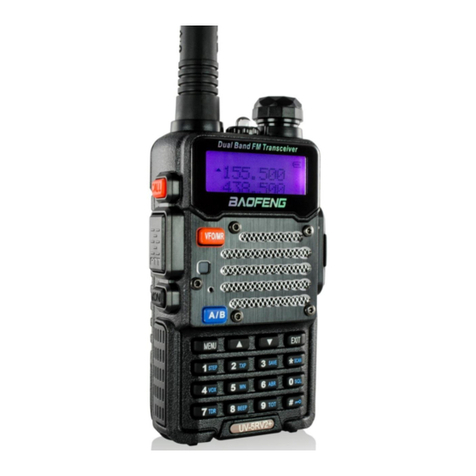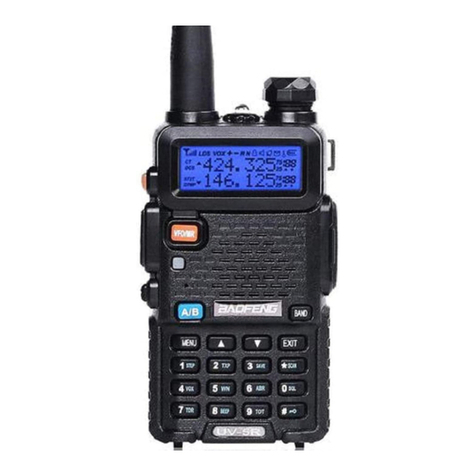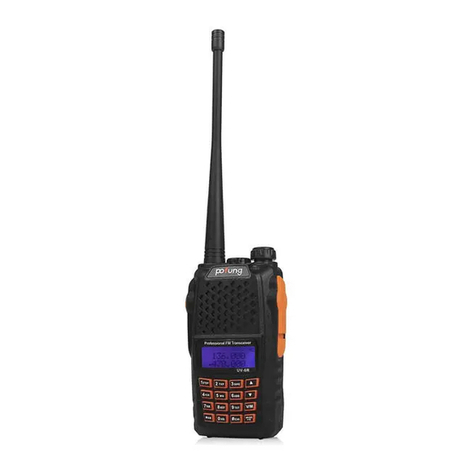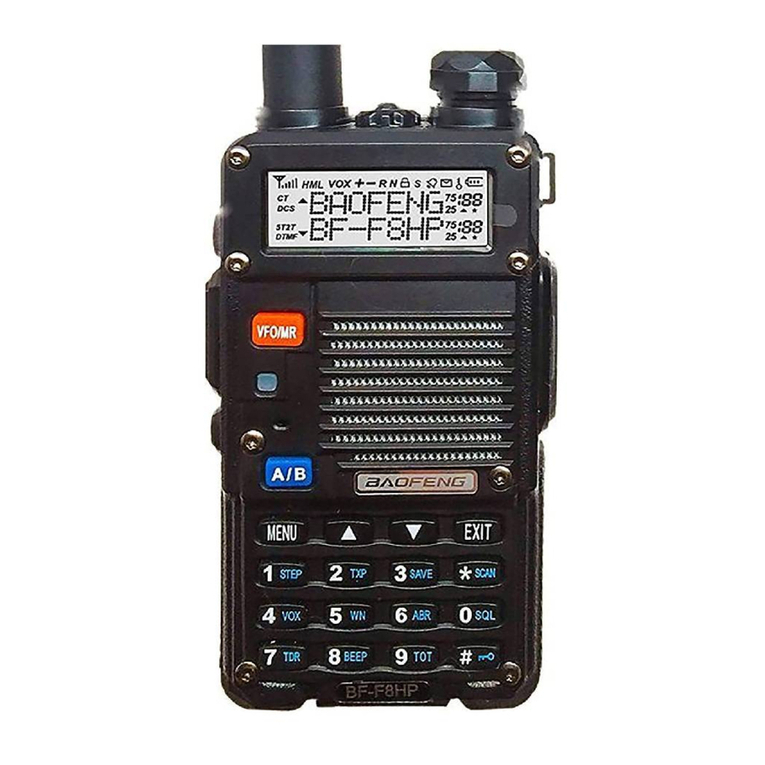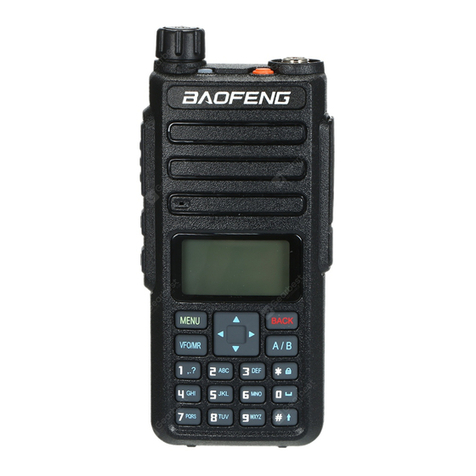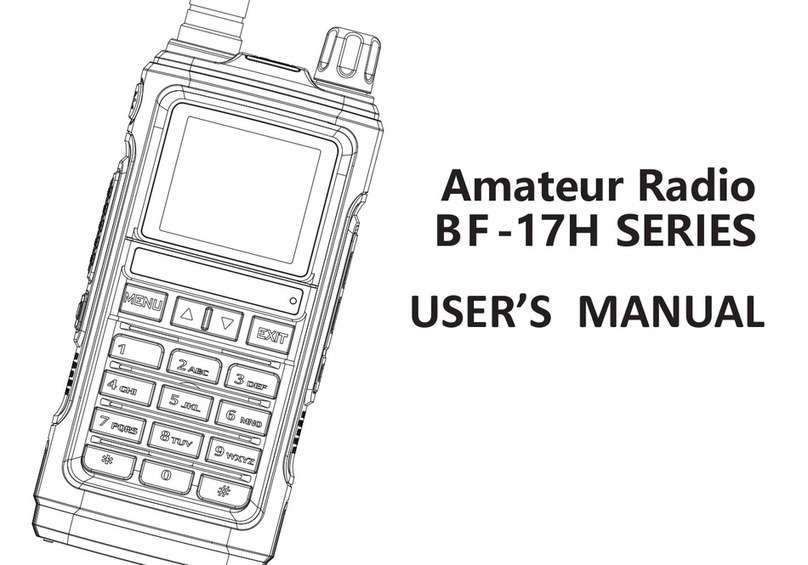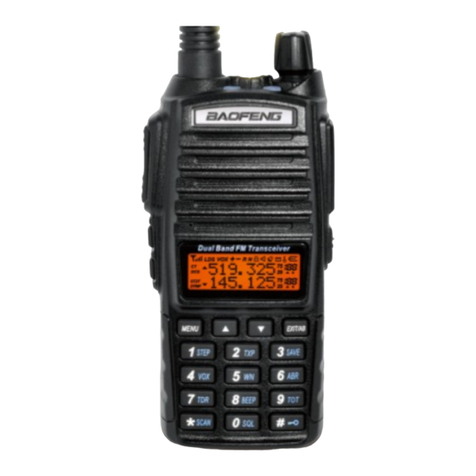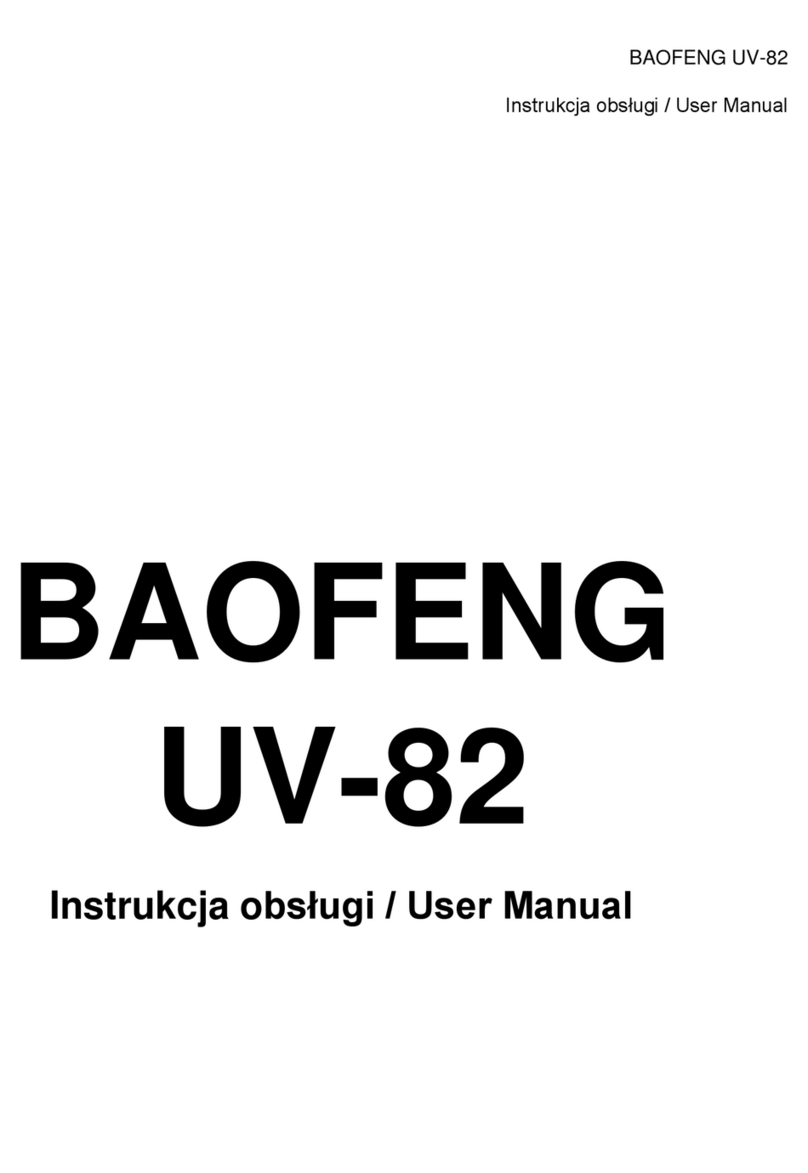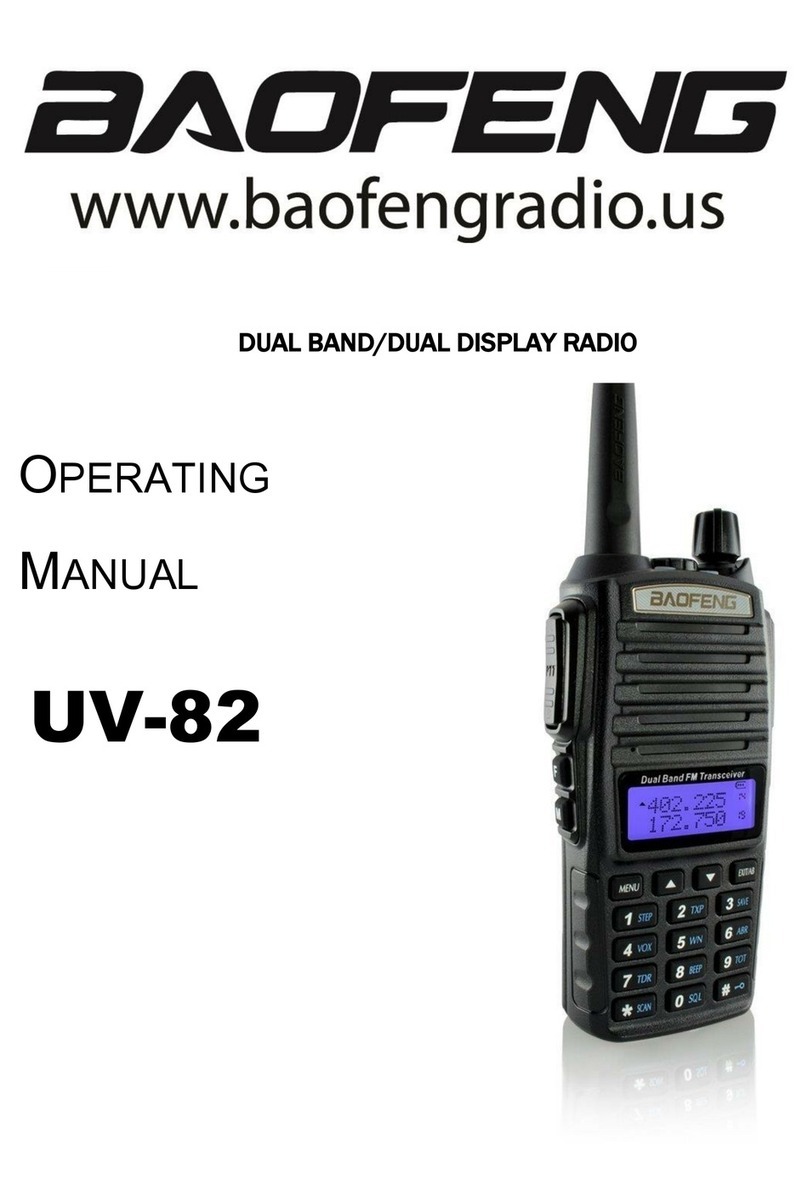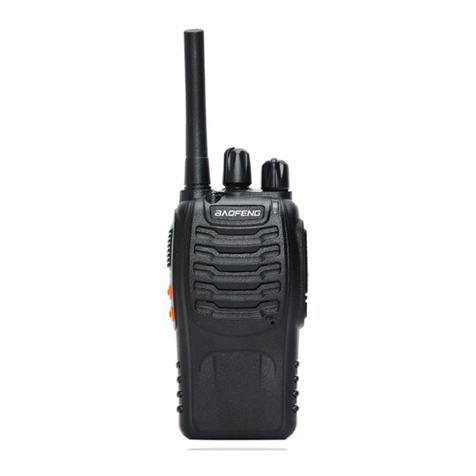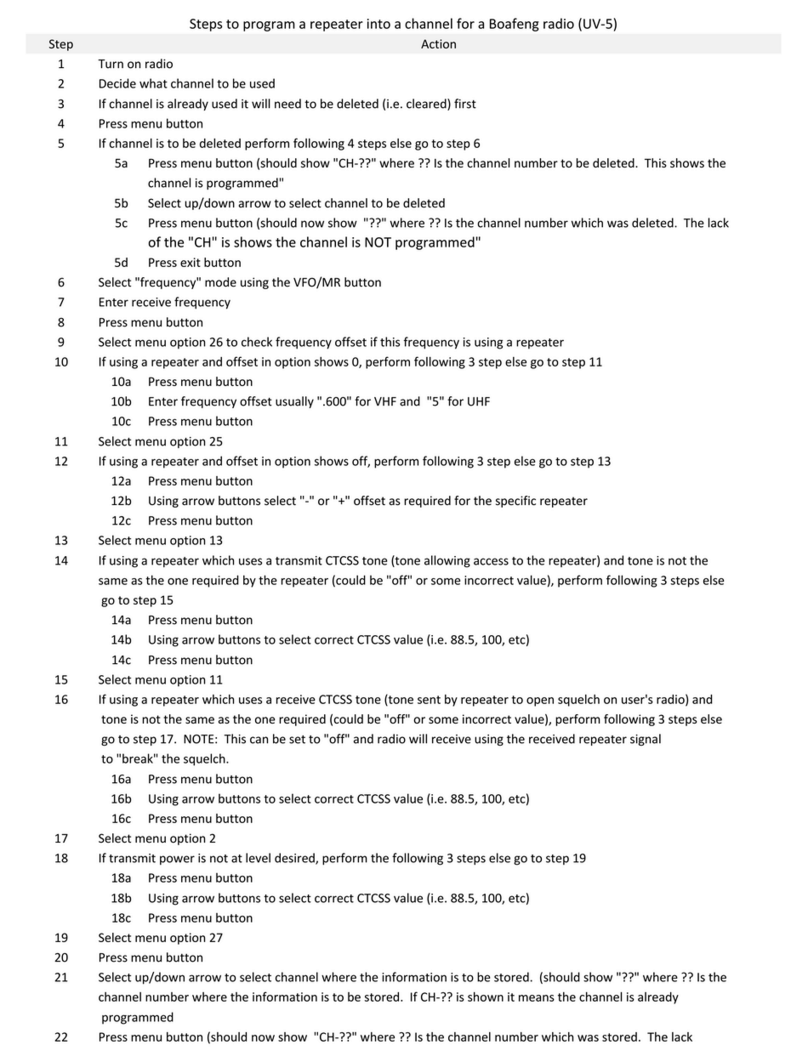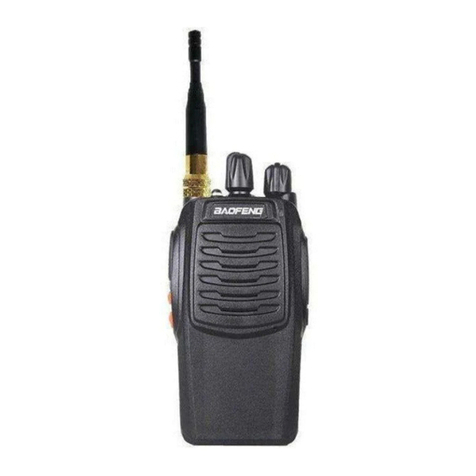1.SAFETYINFORMATION:
The following safety precautions shall always be observed during operation, service and repair of this equipment.
◇ This equipment shall be serviced by qualified technicians only.
◇ Do not modify the radio for any reason.
◇ Use only BAOFENG supplied or approved batteries and chargers.
◇ Do not use any portable radio that has a damaged antenna. If a damaged antenna comes into contact with
your skin, a minor burn can result.
◇ Turn off your radio prior to entering any area with explosive and flammable materials.
◇ Do not charge your battery in a location with explosive and flammable materials.
◇ To avoid electromagnetic interference and/or compatibility conflicts, turn off your radio in any area where
posted notices instruct you to do so.
◇ Turn off your radio before boarding an aircraft. Any use of a radio must be in accordance with airline
regulations or crew instructions.
◇ Turn off your radio before entering a blasting area.
◇ For vehicles with an air bag, do not place a radio in the area over an air bag or in the air bag deployment area.
◇ Do not expose the radio to direct sunlight over a long time, nor place it close to heating source.
◇ When transmitting with a portable radio, hold the radio in a vertical position with the microphone 3 to 4
centimeters away from your lips. Keep antenna at least 2.5 centimeters away from your body when transmitting.
WARNING:Ifyouweararadioonyourbody,ensuretheradioanditsantennaareatleast2.5
centimetersawayfromyourbodywhentransmitting.

